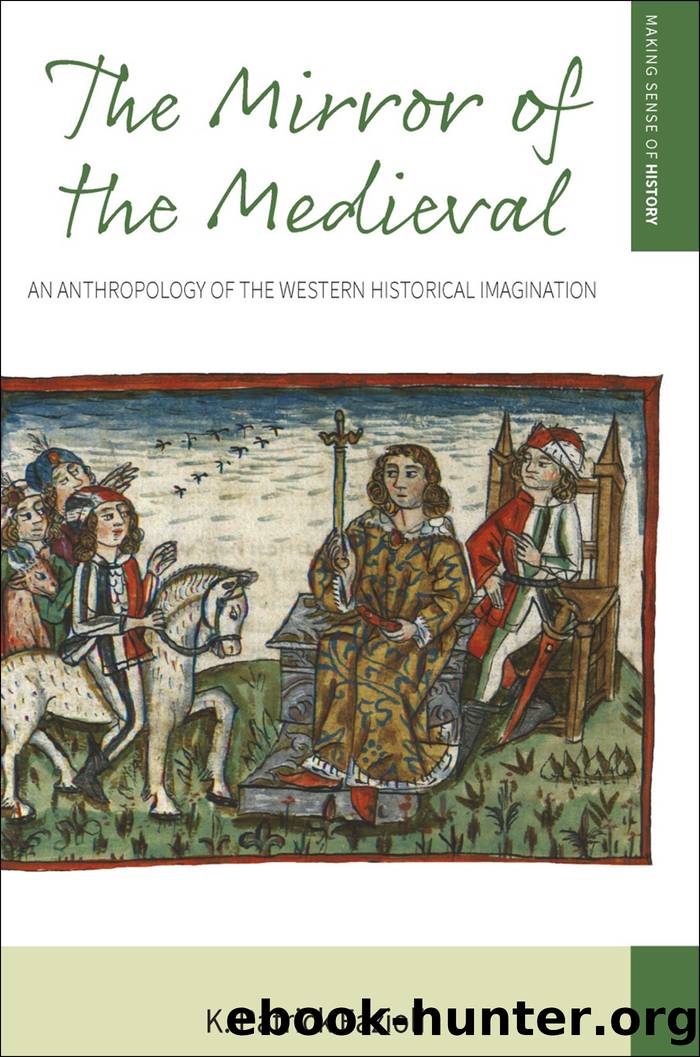The Mirror of the Medieval by K. Patrick Fazioli

Author:K. Patrick Fazioli
Language: eng
Format: epub
Publisher: Berghahn Books
Published: 2017-07-14T16:00:00+00:00
Myth of Destiny: History and Identity in an Independent Slovenia
One of the central questions for nationalist ideology is: what exactly makes one an authentic member of a particular nation? As outlined above, eighteenth- and nineteenth-century nationalists across Europe focused on language and ethnicity as an expression of deeper primordial ties of kinship, “blood,” and shared ancestry. This framework encouraged Slovenian historians and archaeologists to trace their ethnic origins to the settlement of the Eastern Alps by Slavic-speaking groups during the early Middle Ages; this, in turn, fostered a sense of kinship with other South Slavic peoples, eventually becoming an intellectual cornerstone in the justification for the creation of Yugoslavia after World War I. For over seventy years, Slovenians remained a part of this multi-ethnic nation, although their relationship with other ethnic communities in the Balkan states was not always harmonious.
Then, in 1991, the longstanding nationalist dream of political sovereignty was finally realized when the Republic of Slovenia declared its independence from Yugoslavia. While this was a celebratory moment for many Slovenians, independence would ultimately force this young nation to revisit several key assumptions about the fundamental nature of Slovenian national identity. The dominant ethno-linguistic conception of national identity was explicitly written into the Slovenian constitution, which asserted “the fundamental and permanent right of the Slovene nation to self-determination; and from the historical fact that in a centuries-long struggle for national liberation we Slovenes have established our national identity and asserted our statehood.”39 However, as Veronika Bajt has noted, since the Republic of Slovenia was established as a state of and for ethnic Slovenians, over 25,000 permanent residents who did not fit into this category were denied citizenship, effectively rendering them “stateless” peoples. The deliberate and systematic exclusion of certain ethnic groups (primarily Serbs, Croats, Bosnian Muslims, Kosovoans, and Roma) from the Slovenian national community exposed the traditional understanding of Slovenian identity to be incongruous with the modern conception of nation-states as organized around “civic elective membership in a community of multiethnic and multicultural solidarity.”40
Moreover, as their national independence coincided with the end of the Cold War, Slovenians were also granted an opportunity to rekindle their political, economic, and cultural relationship with Western Europe. Even before the disintegration of Yugoslavia, many had already begun to see their membership in the South Slavic state as a detriment to economic growth and development. Some Slovenian politicians positioned their country as a “lost child” that was finally “coming home” to Europe after decades of unwanted Yugoslav domination behind the Iron Curtain.41 In the early 1990s, representations of other South Slavic peoples, and even the term “Balkan,” were increasingly saddled with negative connotations in Slovenian media and political discourse.42 In some ways, this so-called “return to Europe” might be seen as a revival of early twentieth-century debates over whether Slovenians should align themselves with the Austro-German or Balkan spheres of influence (see Chapter 3).
Renewed debates over the nature of Slovenian identity have reshaped their collective historical consciousness in a number of important ways. First, there
Download
This site does not store any files on its server. We only index and link to content provided by other sites. Please contact the content providers to delete copyright contents if any and email us, we'll remove relevant links or contents immediately.
| Africa | Americas |
| Arctic & Antarctica | Asia |
| Australia & Oceania | Europe |
| Middle East | Russia |
| United States | World |
| Ancient Civilizations | Military |
| Historical Study & Educational Resources |
Room 212 by Kate Stewart(5070)
The Crown by Robert Lacey(4761)
Endurance: Shackleton's Incredible Voyage by Alfred Lansing(4719)
The Iron Duke by The Iron Duke(4319)
The Rape of Nanking by Iris Chang(4165)
Joan of Arc by Mary Gordon(4053)
Killing England by Bill O'Reilly(3968)
Say Nothing by Patrick Radden Keefe(3937)
I'll Give You the Sun by Jandy Nelson(3394)
Shadow of Night by Deborah Harkness(3324)
Hitler's Monsters by Eric Kurlander(3291)
Mary, Queen of Scots, and the Murder of Lord Darnley by Alison Weir(3171)
Blood and Sand by Alex Von Tunzelmann(3164)
Eleanor & Park by Rainbow Rowell(3110)
Darkest Hour by Anthony McCarten(3096)
Margaret Thatcher: The Autobiography by Thatcher Margaret(3046)
Book of Life by Deborah Harkness(2892)
Red Famine: Stalin's War on Ukraine by Anne Applebaum(2890)
The One Memory of Flora Banks by Emily Barr(2829)
